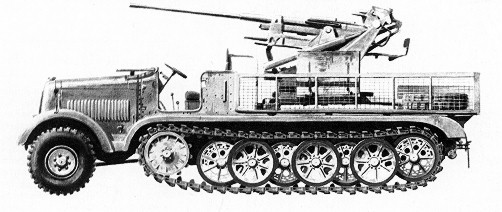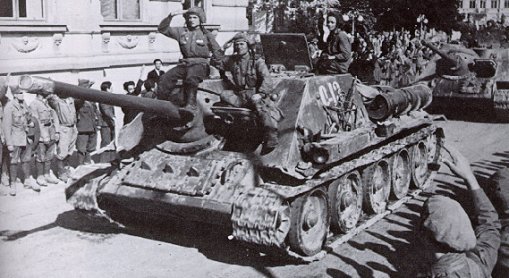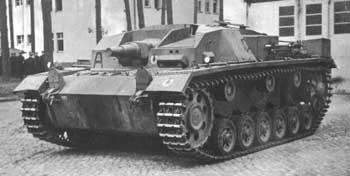 ...
... …
…
Self-propelled guns
History and functions
 ...
... …
…
![]()
Origins;
Self-propelled military platforms are as oldest as the history of motor trans portation itself. They appeared because of the necessity to increase the artille ry's mobility and availability for selected infantry assaults in dense terrain; to defend against the airplane and the tank. Since its apprearance as a combat tool, the self-propelled military platform fufilled both offensive and defensive roles. During WW1, artillery was tracked and of high caliber, sometimes diffi cult to obtain in the desired spot for an attack. When an attack on a dense tar get such as a woodlot or a fortified village, the infantry had to wait days that the field artillery could be laboriously tracked and aimed. But when cannons were fitted on bulldozer or heavy truck chassis, they were very successful a gainst those entrenchments, as well as against biplanes and balloons: in Lon don, trucks were fitted with French 75mm anti-aircraft guns and used as de facto AA platforms.
Uses:
The Second World War saw the introduction of four types of self-propelled guns: anti-aircraft artillery (AAA) platforms, the tank destroyers, the assault guns, and self-propelled field artillery. All shared the attribute of mobility, but each has a special niche in the military manual:
The first category had to fufill the protective cover against low-to-medium flying aircrafts. They had to accompanied armored and motorized forma tions. They could also be used as heavy firecover against ground troops and small vehicles. AAA platforms such as the German Flakvierling 20 (
upper left) or the American M-15, both half-tracked vehicles, had very good results in this dual rôle.
The second category had only one function: tank busting. They were essential lay heavily armored defensive vehicles fitted with long and fast anti-tank guns for maximum penetration; these tank destroyers could take as well as give pu nishment to the enemy. The replaced the various tracked anti-tank guns for flank defense of their own attacking columns against enemy tanks and other vehicles. They waited in a semi-recessed position, taking advantage of ground cover and camouflage until the enemy tanks were outmaneuved by friendly tanks and then offer themselves as targets of opportunity. Designs such as the German Jagdpanther or the Russian SU-85 ( upper center) were dreaded and efficient tank killers. But many others often lacked mobility and secondary ar mament for protection against infanty grenadiers and sappers, as the Ger man Elefant or Ferdinand proved.
The third type visually resemble the second one, and was known as assault guns. It was a very well protected self-propelled gun designed for close infan try support in dense areas such as bushes, mountain passes, and street figh ting. Most of them didn't have a real anti-tank potential but they were never theless appreciated by infantrymen for they provide protection and flexible ar tillery support where and when needed. In the German Army, the assault guns were part of the aero-terrestrial doctrine of warfare, but for other ar mies, they were nothing more than stop-gap measures dictated by the events, as was illustrated by the Soviet KV-2 platform.
The fourth type doesn't really belong to this database, but it had to be men tionned. They were the self-propelled howitzers. They were nothing more than regular high-caliber artillery pieces fitted on existing chassis with a mo re or less degree of operational success. Most of them were not protec ted by armor. The military potential was not grasped until the middle of the war, but spawned greatly after WW2. By 1980, self-propelled artillery replaced most towed field howitzers in the inventory of major armies.
|
Platform type |
Definition criterias |
|
AAA |
Mobility - armament - protection |
|
Tank destoyer |
Protection - armament - mobility |
|
Assault gun |
Protection - mobility - armament |
|
SP howitzers |
Armament - mobility - protection |
Conclusion:
From 1945 to 1995, self-propelled guns are still part of the big armies inven tory. But only two types had survived the technological progress: the AAA platform and the self-propelled howitzer. As for the tank destroyer, this thick armored beast was replaced in the late fifties by the various wire-guided and laser-sighted anti-tank missiles. Mounted on small mobile platforms such as Jeep and helicopters, they were much more efficient and mobile than those low and stubby pieces of armor. The assault gun had also dissapeared; the de ployment of IFVs and helicopters capable of keeping pace with tanks and in fantry didn't give them any reason to exist. So, the various APCs, IFVs and helicopters could all do their job more efficiently and swiftly.
Only the self-propelled AAA platforms and self-propelled howitzers re mained credible military tools in modern combat. The AAA platforms were credited on most postwar ground-to-air victories in various thea ters: Korea, Algeria, Vietnam, the Israelo-Arab rivalries, the Indo-Paki stani rivalries, the Falklands campaign, and the Gulf campaign. Histo rians and military buffs nagged at the AAA platform as a low-tech thing surviving in the age of the missile. But they had to bear in mind that good AAA artillery is seldom affected by the weather and electronic countermeasures. All a good gunner crew chief has to do it to anticipate the flight path of an enemy plane and spray busts of 20 or 40mm projectiles. When struck by those projectiles, the enemy pilot will see that a hole is a hole and those holes will cripple his plane; it doesn't matter if the struck plane is a Me-109 or a F-16C: no difference, it will be shot down. In Vietnam, appalling damages were cause by ground fire from self-propelled Soviet ZSU platforms. The self-propelled howitzer had the greatest postwar successes, because they had proven their effecti veness in the Persian Gulf campaign.
_____________________
Ó
JPA Sites, 1999